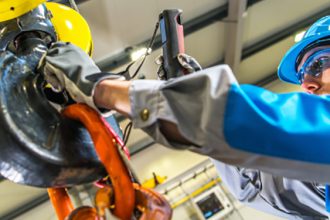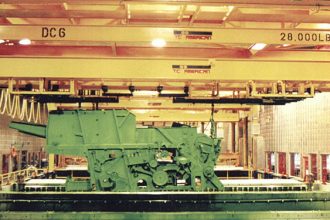Crane Electrification Options: Learn About Conductor Bars, Festoons, And Cable Reels
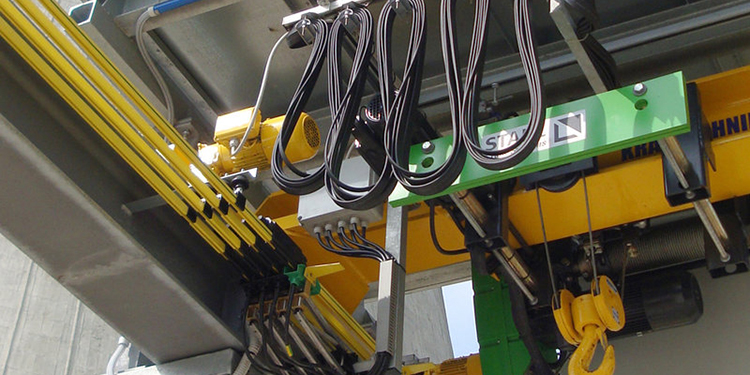
A Guest Post from the Members of the Electrification and Controls Manufacturers Association (ECMA).
Overhead cranes are essential equipment for many industries, including manufacturing and logistics. But in order for cranes to lift and move heavy loads within a facility, they need power. There are three primary crane electrification options: conductor bars, festoon systems, and cable reels. Each offers both advantages and disadvantages, making them ideally suited for different types of overhead cranes and applications.
Helping overhead crane owners and prospective buyers better understand their crane electrification options are the members of the Electrification and Controls Manufacturers Association (ECMA). The group publishes the American National Standard (ANSI) ECMA 35: Electrification Systems for Electric Overhead Traveling Cranes. This standard details minimum requirements and guidelines for both alternating current (AC) and direct current (DC) electrification systems used to power overhead electric cranes, monorails, gantry traveling cranes, and workstation cranes.
“All three types of crane electrification options — conductor bars, festoons, and cable reels — serve the same purpose,” explained Ben Hiebenthal, Mechanical Engineer III and Platform Lead of Rotary Motion Products at ECMA member Conductix-Wampfler. “They all provide power to the crane and its components. They each are simply different modes, or ways, to deliver electricity to the moving overhead equipment.”
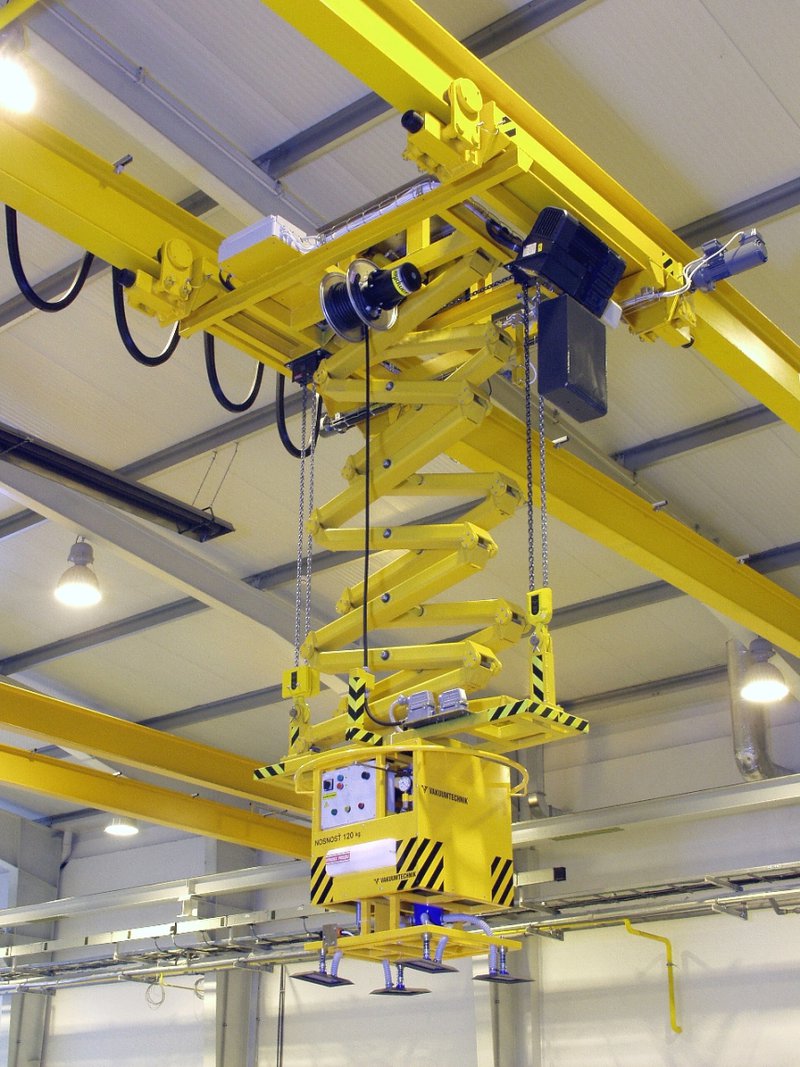
The different form factors exist to accommodate different application limitations, Hiebenthal continued. “Often, what dictates the choice of which crane electrification option to use is the available space that surrounds the equipment. Each has different space requirements and, in many instances, a combination of two or more options is the optimal solution,” he said.
For that reason, Hiebenthal advises operations considering a new overhead crane to review ECMA 35. He also recommends engaging a crane electrification supplier early in the design process.
“Electrification is often an afterthought when a facility is planning a new crane purchase,” he said. “For the most cost-effective solution, an electrification supplier can advise about the amount of space required around the machinery to adequately support the power supply. They can also help to guide the selection of conductor bars, festoons, and/or cable reels individually or in combination to best suit the application.”
Crane Electrification via Conductor Bars
Conductor bar systems are a popular method for electrifying overhead cranes and their hoists. These systems generally consist of four linear bars (three live, one ground), collectors, and all mechanical components for installation. The collectors travel along the length of the bars as the crane moves to supply power to the crane and its components. Protective guarding options and grounding systems keep personnel safe from unintended contact.
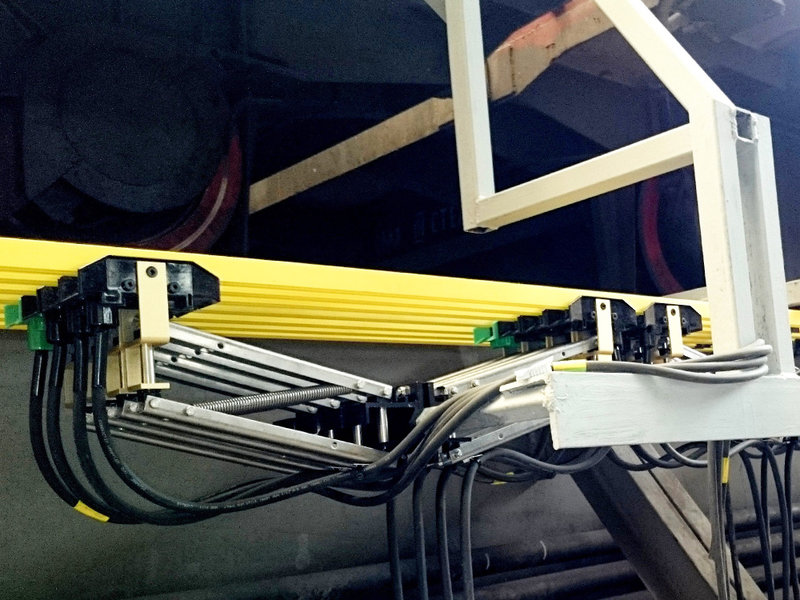
“Inside a building, conductor bars are commonly mounted near the ceiling along the entire runway,” he said. “They’re also frequently mounted on a bridge to power the trolley’s movement back and forth across the crane.”
Conductor bars offer several advantages for overhead crane electrification. First, they provide a continuous power source to the crane, which eliminates the need for frequent stops and starts. This results in smoother and more efficient crane movements, as well as reduced wear and tear on the equipment.
Another benefit of conductor bars is easy customization. Options include different amperage ratings, voltage levels, and insulation options, depending on application requirements. “Some even permit transmission of data signals over the same bar used to transmit power,” Hiebenthal noted. “That can reduce the number of conductor bars needed on the crane.”
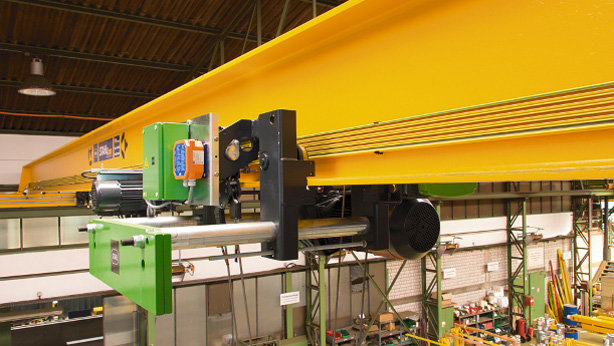
Additionally, conductor bars can be mounted for bottom or side collector entry to accommodate different crane designs and layouts. That makes them ideal for facilities with low ceiling heights. “While their sliding collector shoes do need adequate space to stack up at one end of the crane, they generally take up less space than festoons and cable reels,” he added.
Like all crane components, conductor bars require maintenance and inspection. Over time, the sliding contacts or collectors can wear down or become dirty, affecting their electrical conductivity. Regular cleaning and inspection of the conductor bars are necessary to ensure optimal performance and prevent downtime.
Powering Overhead Cranes with Festoon Cable Systems
Festoon systems are another frequently used overhead crane electrification option. A festoon system consists of a series of power cables suspended along the crane runway or bridge managed by trolleys. The cables drape between each trolley; as the crane moves, so do the trolleys, which extend the cables, feeding out the slack. When the crane or bridge returns to its starting position, the trolleys retract and stack back up — accordion style — to compress the loops of cable.
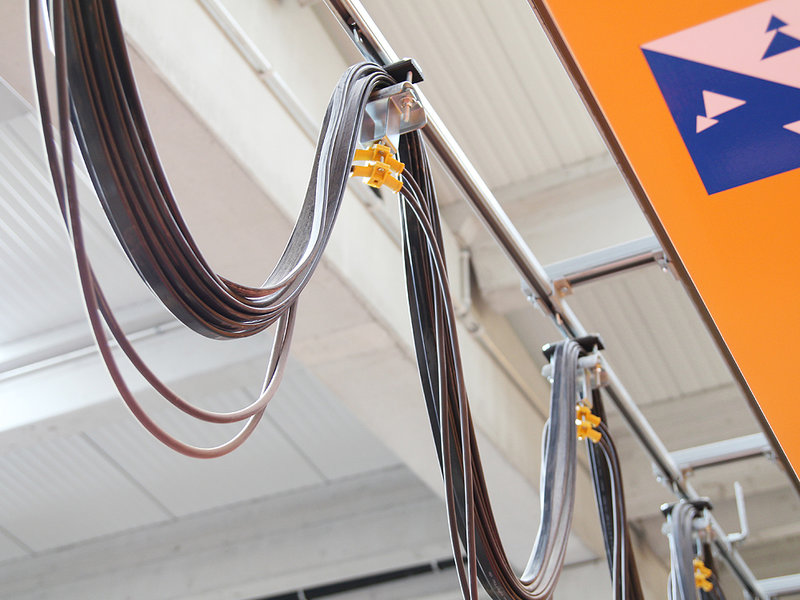
Festoons are flexible and easily customized in terms of length and the number of cables needed to support the crane’s movement through a work area. They are also relatively easy to install and maintain. They do, however, require more storage space for the trolleys and cables, said Hiebenthal.
“The longer the travel distance of the runway or bridge, the longer that collection of cables will be and the more space you’ll need to store them,” he said. “Additionally, in a low headroom area, a festoon system can be problematic if the loops are hanging into a work cell under a jib crane, for example.”
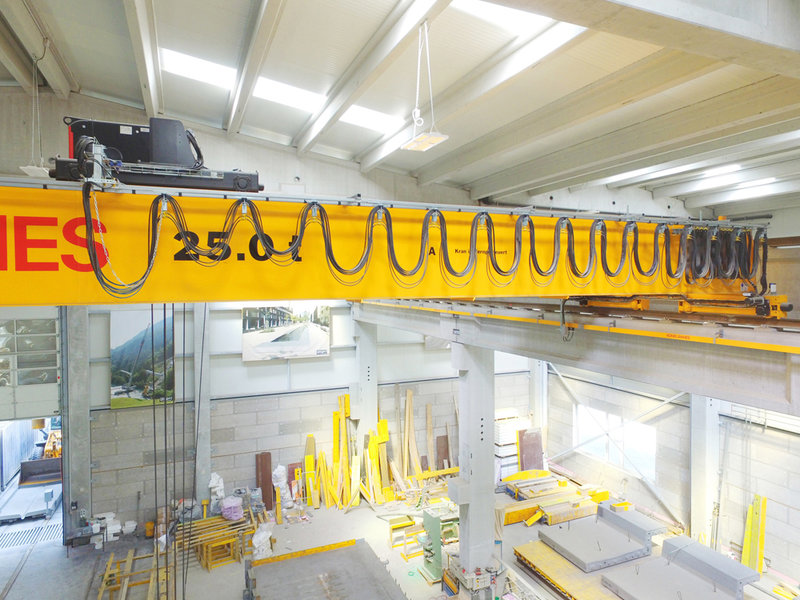
Festoon systems, like all crane components, require routine maintenance and inspection. The cables, because of their continuous extension and retraction, are more susceptible to wear. Likewise, depending on the environment, they can be more prone to damage.
Cable Reels Unspool and Retract as Overhead Crane Moves
Cable reel systems are another common option for overhead crane electrification. These systems consist of a cable wound onto a spool and connected to a power source. As the crane moves along the runway or bridge, the cable unspools from the reel and provides electrical power to the crane. As the crane returns, the reel system automatically retracts the cable either with a spring or motor and winds it back onto the spool.
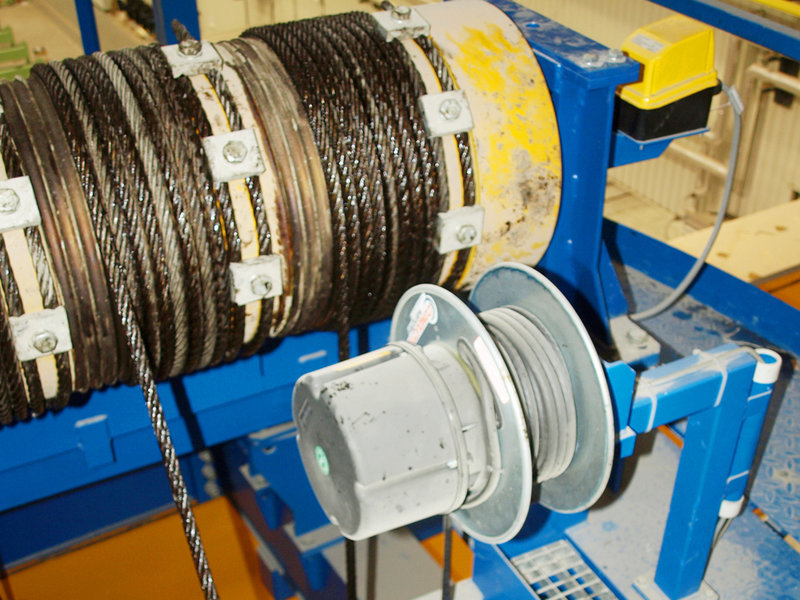
One of the main advantages of cable reel systems is their ability to provide a continuous power source to the crane. Cable reel systems are also relatively easy to install and maintain. As long as there is adequate space to house the spool, mounting for this system can be above, below, or alongside the crane.
“The downside to a cable reel system is that they typically only manage one cable,” Hiebenthal noted. “In some special circumstances, it may be possible to wind two cables on the same spool, but that can limit the diameter of the cable. So if a system needs multiple cables, a cable reel system is probably not the best choice.”
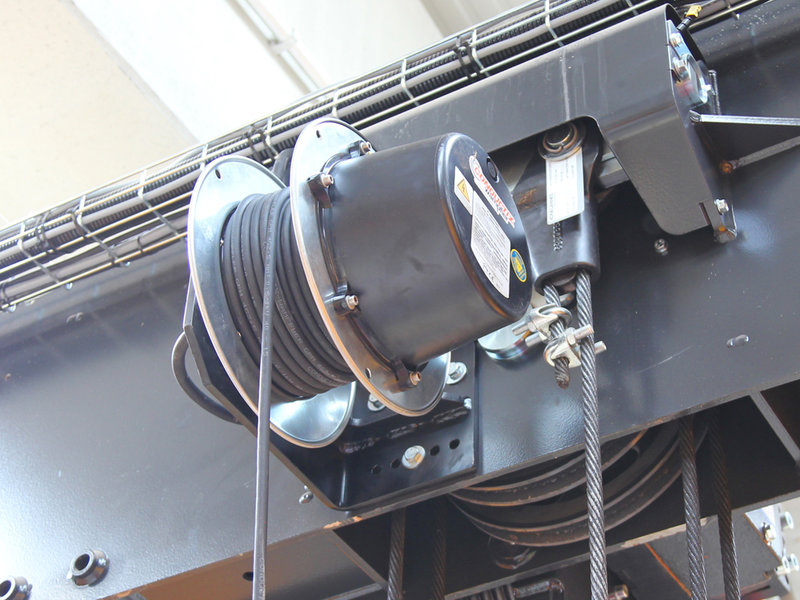
Further, an exceptionally long travel distance for either the runway or bridge will require an exceptionally large reel system. That may not be practical, space efficient, or cost effective, he explained.
As with conductor bars and festoons, cable reel systems also require routine maintenance and inspection. The cables can be more susceptible to wear and damage, depending on the operating environment. Additionally, there is a chance that the cable could become tangled on the reel if the system is not designed and managed properly.
Where to Get More Information
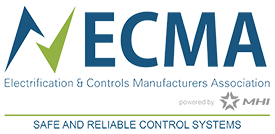 Want to learn more about overhead crane electrification options, including conductor bars, festoons, and cable reels?
Want to learn more about overhead crane electrification options, including conductor bars, festoons, and cable reels?
Ask the members of the Electrification and Controls Manufacturers Association (ECMA), the industry’s leading suppliers of electrification and controlling devices. They supply solutions worldwide and in virtually every major manufacturing and distribution sector. ECMA members manufacture and distribute equipment that controls, services, and enhances productivity and safety in industrial handling, including remote controls, anti-collision devices, weighing solutions, brakes, resistors, cabling, drives, motors, festooning, and more.
For more information, visit www.mhi.org/ecma.


